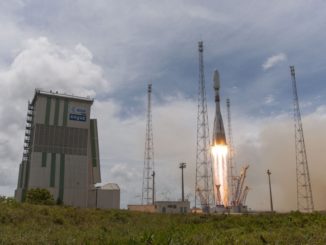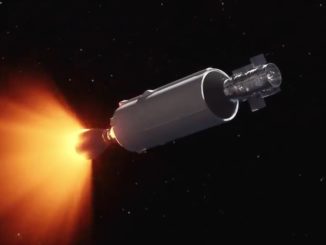The European Space Agency’s LISA Pathfinder spacecraft, destined to test the concept of gravitational wave detection a million miles from Earth, is nearly ready for launch Dec. 2.
The hexagonal spacecraft, plus a disposable propulsion module to get it to an observation post at the L1 Lagrange point, arrived at Europe’s spaceport in French Guiana in October. Technicians fueled the main engine’s propellant tanks, completed final checks on the spacecraft, then encapsulated the probe inside the payload fairing of its Vega rocket.
Ground crews enclosed LISA Pathfinder inside the two-half payload fairing Nov. 16, then transferred the spacecraft to the Vega launch pad last week, and it was attached atop the four-stage rocket Nov. 19.
Liftoff is scheduled for Dec. 2 at 0415 GMT (11:15 p.m. EST on Dec. 1) to begin a month-and-a-half cruise to the L1 Lagrange point, where it will arrive in January in a looping halo-like orbit around the gravitationally-stable location 1.5 million kilometers (930,000 miles) toward the sun from Earth.
LISA Pathfinder’s mission is to test new technologies, such as laser ranging systems, free-floating gold-platinum test cubes, and tiny micro-thrusters, required for a more ambitious future project to attempt detection of gravitational waves rippling across the cosmos as predicted by Einstein’s general theory of relativity.
These images show the journey of LISA Pathfinder since its arrival at the Guiana Space Center, including final preparation of the separation device between its science and propulsion modules, fueling activities, encapsulation and attachment to the Vega booster.
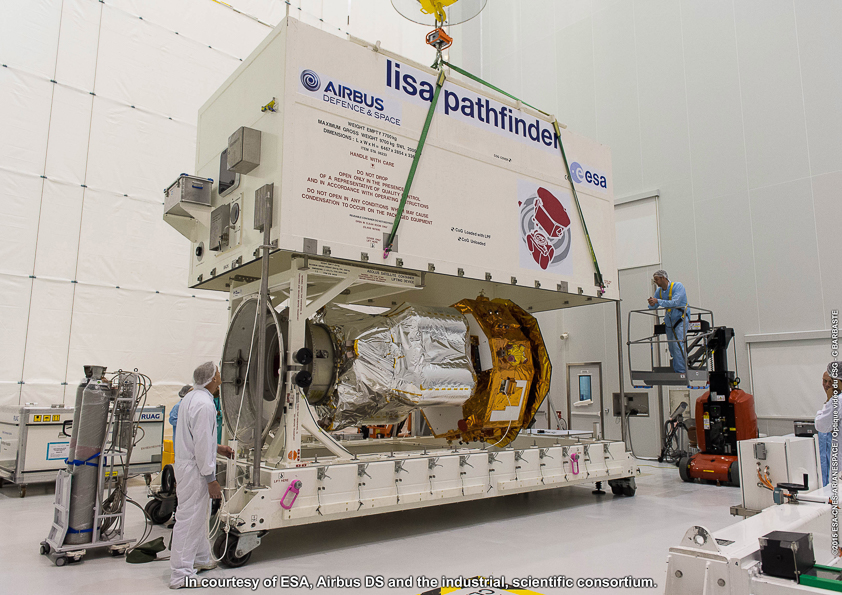
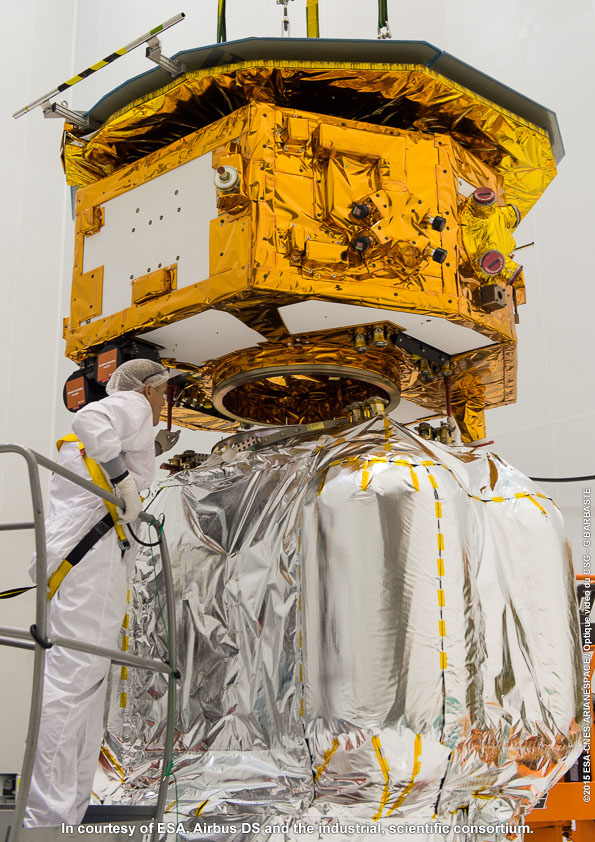
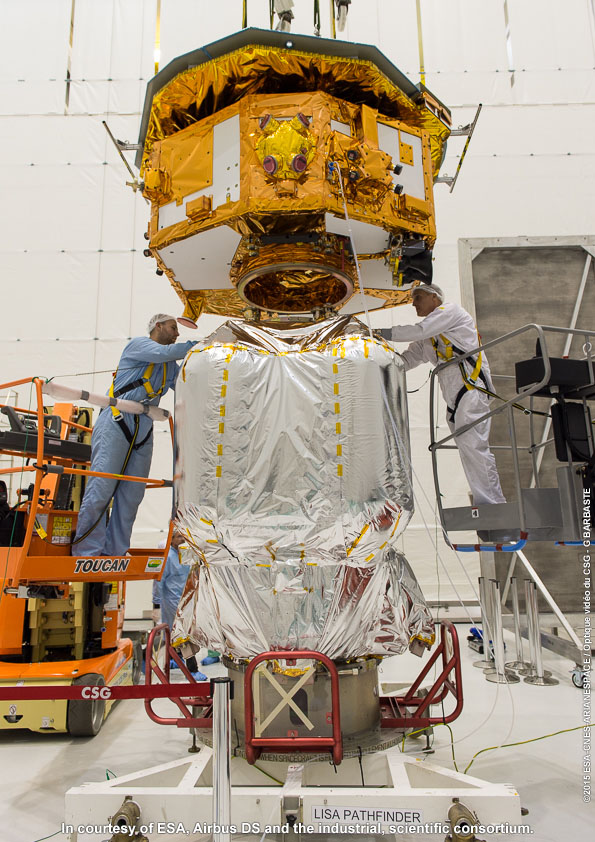
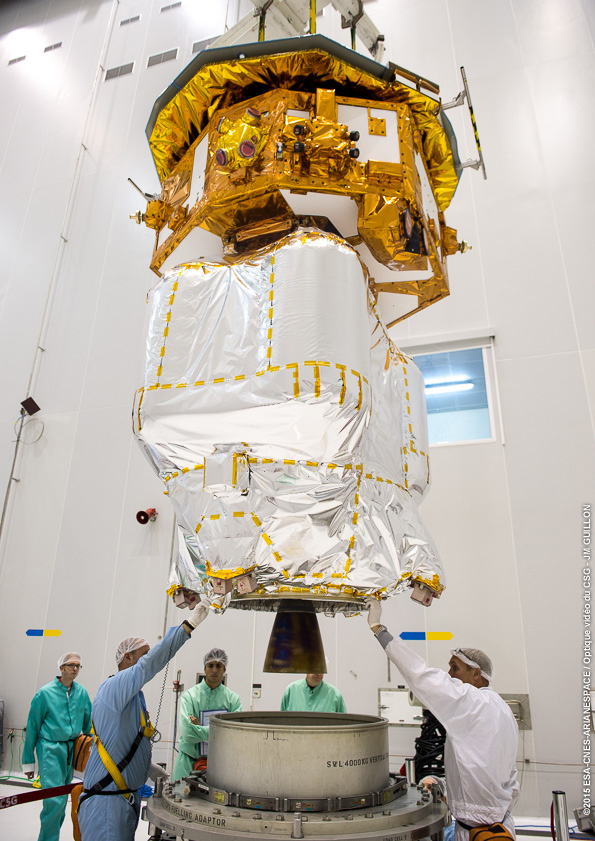
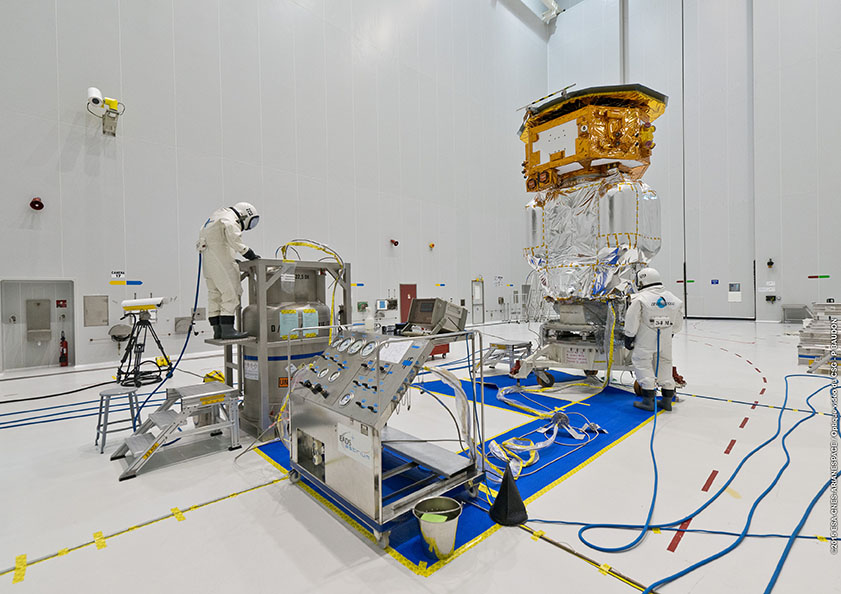
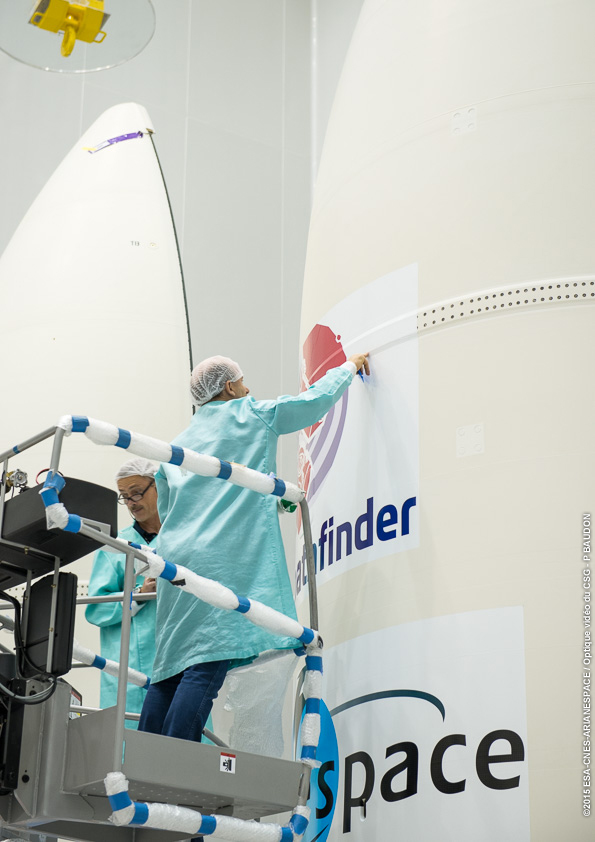
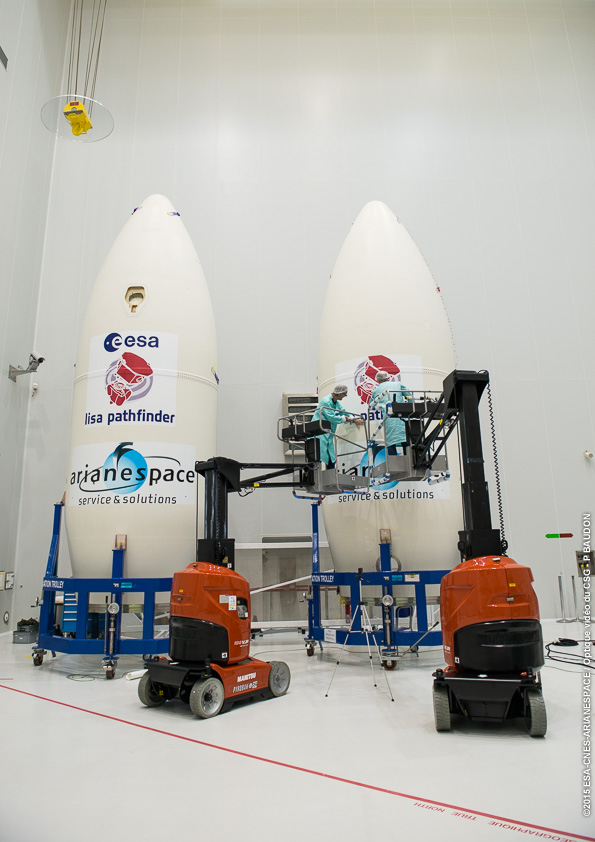
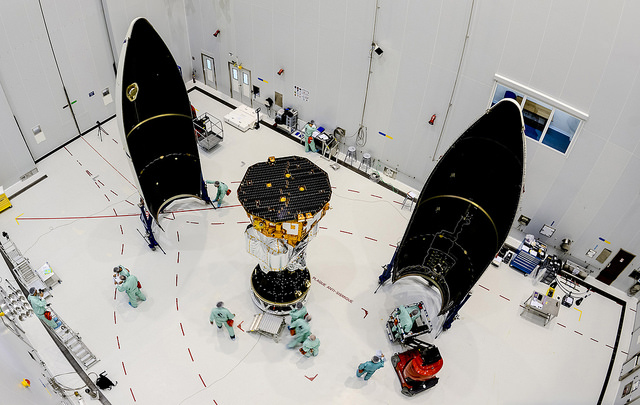
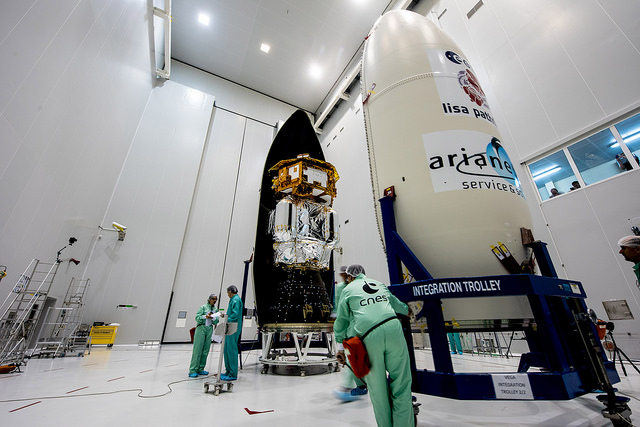
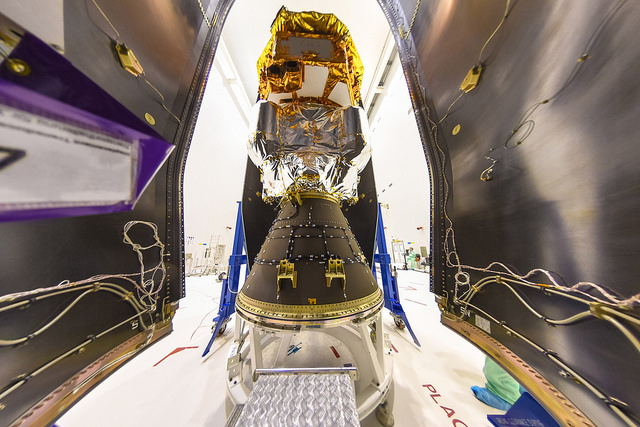
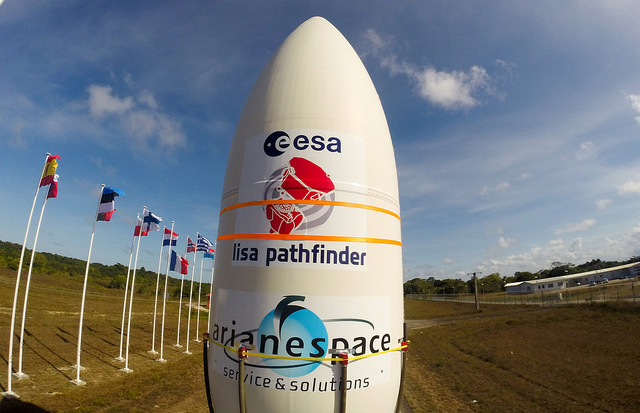
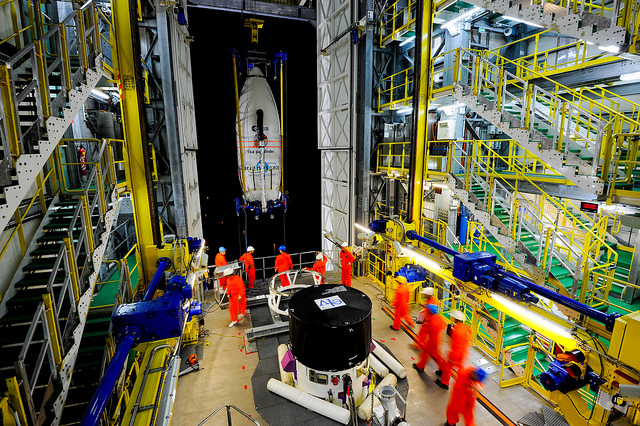
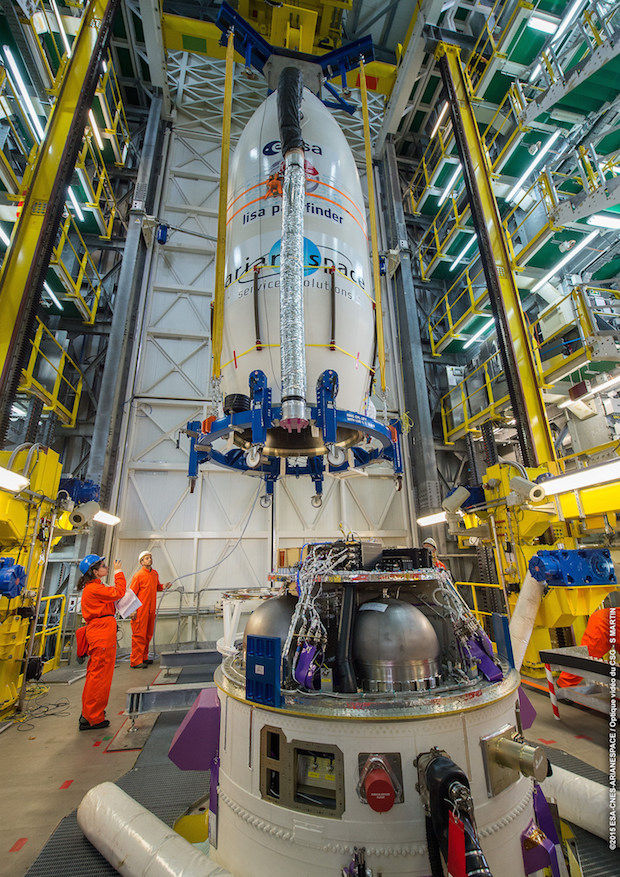
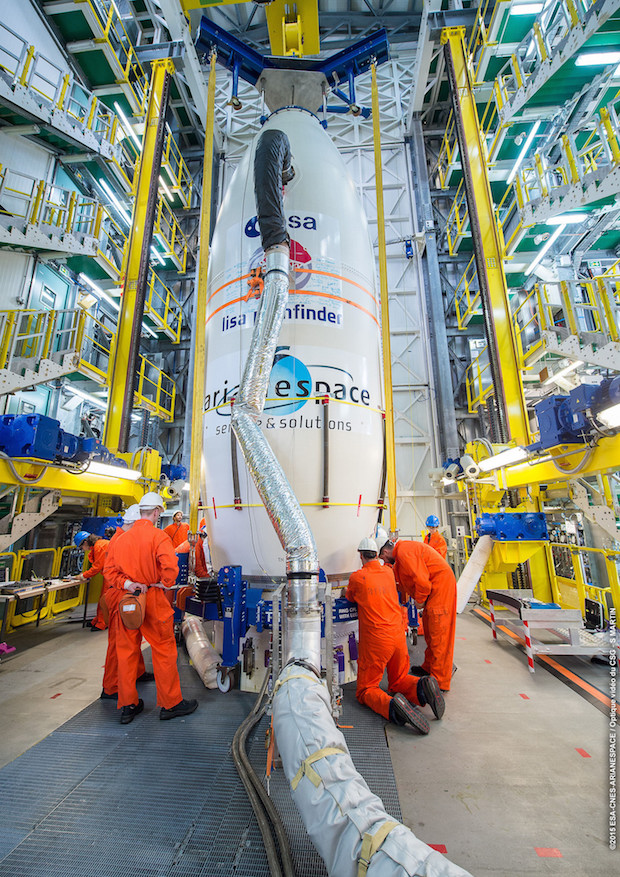
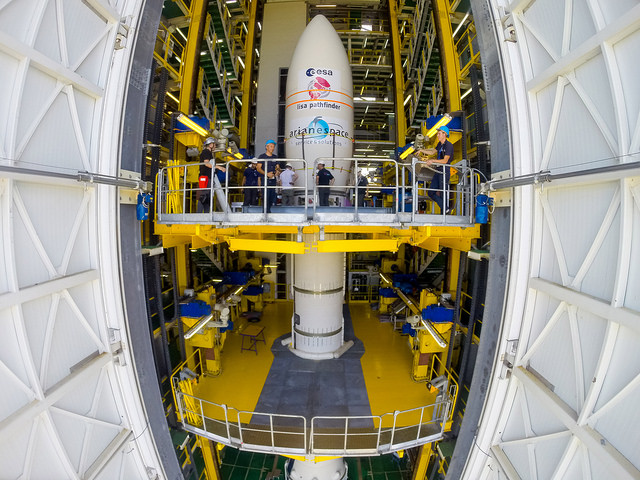
Email the author.
Follow Stephen Clark on Twitter: @StephenClark1.

